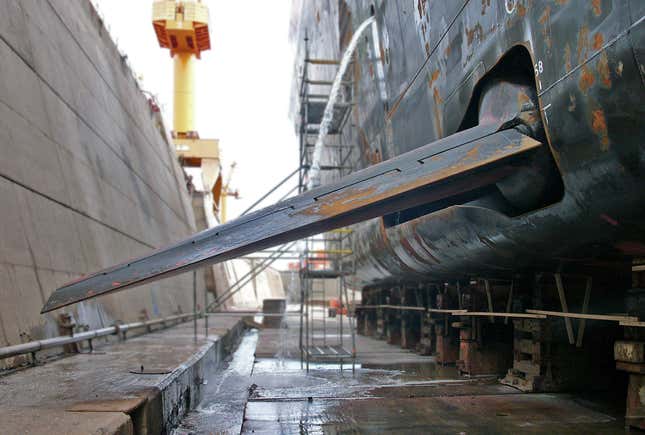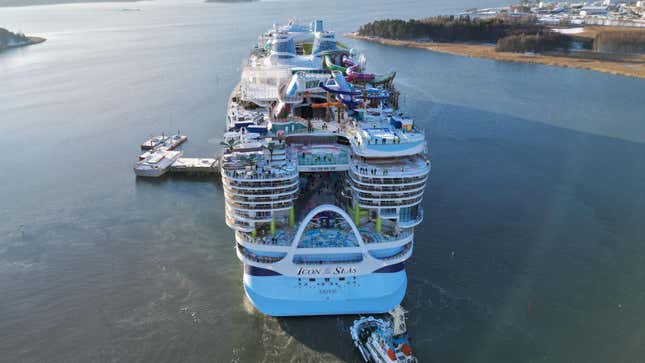World's Largest Cruise Ship Has Twenty Decks, But Barely Any Of It Sits Below The Water

Photo: Royal Caribbean
Increasingly advanced designs and record profits have allowed modern cruise ships to become maritime behemoths. When Royal Caribbean’s Icon of the Seas departs from Port Miami on its maiden voyage later this month, the new vessel will be the largest cruise ship ever put into revenue service. Icon of the Seas is 20 decks tall, nearly 1,200 feet long and cost $2 billion to construct. Shipbuilders follow relatively simple design principles using complex methods to ensure that cruise ships stay afloat in even the roughest conditions.
We’re Driving the 2024 Kia EV9, What Do You Want to Know?

Photo: Hannes Grobe, Alfred Wegener Institute / Wikimedia Commons
Fin stabilizers are the most prominent active feature used to keep these massive ships sailing level across the water. The system’s sensors onboard detect the ship’s roll angle and respond by articulating fins mounted to the ship’s hull using hydraulic power. It’s a similar philosophy to the control surfaces on an airplane. However, the stabilizers are only effective because of the ship’s forward movement, just like a plane soaring through the skies.
Massive modern cruise ships are fitted with four fins, two each on the port and starboard sides. However, older and smaller vessels featured just two stabilizers. According to Royal Caribbean, Rhapsody of the Seas was only fitted with a single fin on each side. The ship was built in 1997 and is roughly a third the size of Icon of the Seas.
Cruise ships aren’t dependent on advanced active systems to maintain stability. Most designs use relatively wide, flat hulls to lower the center of gravity as much as possible. Vessels use ballast tanks to lower the center of gravity further and keep the ship level at lower speeds.

Photo: Royal Caribbean
The Icon of the Seas’ massive size allows Royal Caribbean to fit the ship with ridiculous amenities, like an onboard beach club with a suspended infinity pool. The floating resort can accommodate over 5,600 passengers. The cheapest itinerary listed by the cruise line on the ship will cost $1,700 per person. The math isn’t difficult to understand on how Royal Caribbean could recoup the $2 billion spent to build the ship over its lifetime.
Royal Caribbean reported a $1 billion profit for the third quarter of 2023, so people are still flocking to spend their vacations on cruises. The cruise line has the revenue and passenger demand to keep building massive ships. The company also isn’t waiting to dethrone its own vessel on the top of the world’s largest cruise ship list. Royal Caribbean has already ordered the even larger Star of the Seas, which is expected to enter service in 2025.







